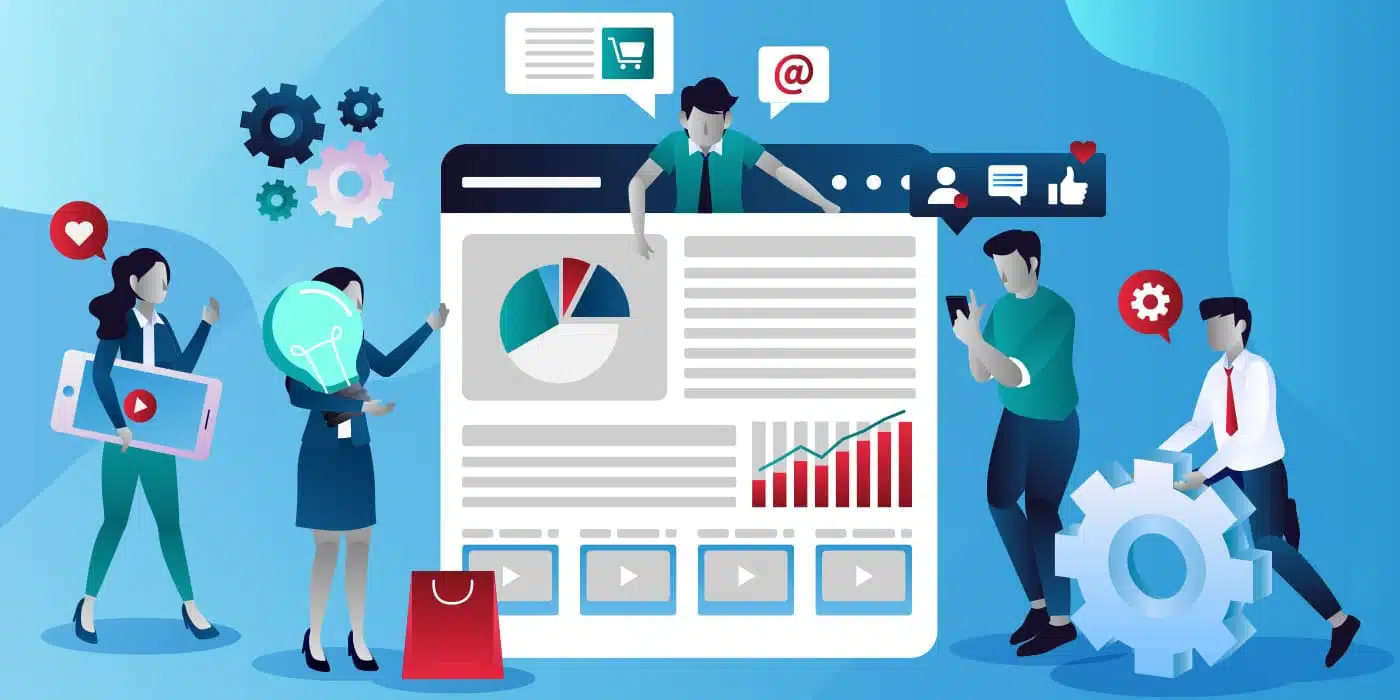Being in the digital marketing world for over fifteen years, I’ve seen a lot of misconceptions about what a landing page is. The term, “landing page” is often used to describe any page on your website that a user might land on—but that’s not really the case. To find out if your landing pages are converting, let’s first start off by taking a brief look at what a landing page actually is…
- A landing page is a single web pages that uses content, visuals, and a single call-to-action (CTA) to entice your target audience into the sales funnel & convert them into actual customers.
Each individual landing page lives completely separate from your website (and completely separate from other landing pages). - Each landing page is created with the sole purpose of receiving traffic from a specific campaign, making it easier to focus on different objectives— with specific goals, analytics, and testing for each.
Each landing page must have a clear purpose and a definitive link attached to an appropriate call-to-action. - Unlike pages on your website, landing pages do NOT have navigation menus, nor do they have multiple forms, sign-ups, or opt-ins. Why? Because you don’t want your audience clicking through your site. You want their sole focus to be on completing your call-to-action (CTA).
3 Key Features of a Successful Landing Page
Did you know that high conversion landing pages convert at 5.3% higher than the average conversion rate of 2.35%?The most successful, high-conversion landing pages are effective because they communicate information with concise copy, compelling visuals, and a structure that primes the visitor to buy…
Here are 3 key features of a successful landing page that convinces a user to stick around and transform into a paying customer or client:
1. Concise, Compelling Copy
Being that your landing page is one, single web page dedicated to an action you want your visitor to take, you’ll want to be sure all the content on the page is relevant to that specific action. There are no navigation bars to click on or additional web pages to view for more details or information — therefore, you’ll need to be sure the page contains all the information your visitor needs to make an informed purchase.
However, keep in mind that a single webpage means limited real estate to effectively get a message across. If the copy on your landing page is too long, you risk losing the reader’s interest. If your copy is too short, you may leave your reader confused on what it is they’re signing up for. The “goldilocks” of landing page copy is clear, concise, and punchy without being cryptic; it effectively communicates the offer at hand with a convincing call-to-action.
For landing pages that specific products or services, it’s important to highlight beneficial features of the product/service and describe any benefits these features bring to the user.*Pro Tip: Describing features and benefits together is the best way to drive and increase conversions.
Additionally, high-conversion landing pages typically offer some form of social proof to help persuade the visitor. Build rapport with your reader by featuring customer testimonials, end-user imagery, or screen grabs of social media posts.
2. Attention-Grabbing Images
Though it’s true that text-only landing pages load faster, rates of retention and processing among viewers are much lower when compared with landing pages that feature imagery or video.
To put it simply, viewers respond more favorably to landing pages with images and/or video.
The first visual your customer sees on your landing page is known as the “hero” image/video. For this reason, it’s crucial to insert eye-catching visuals that clearly display the use of the product or service you’re offering. Bonus points are given to landing pages with visuals that connect with the targeted audience on an emotional level. Why? Because emotional connection influences users to act.
3. Successful Structuring
Below is a structural outline to follow any successful landing page:
Main Headline
- The main headline is the first thing your desired customer or client will read when they enter your landing page, so you’ll want to make sure you clearly state any special discounts, free giveaways or limited time offers here. Write it in a way that is short, punchy and grabs the reader’s attention at first glance. Think: short and impactful.
Subheading
- The subheading, or “supporting headline”, does what its name implies— it supports the main headline by adding a bit more context. This is where you’ll want to write additional information that is important for your offer but would make the main headline way too lengthy if you featured it there instead. Your subheading can either be a direct addition to your main headline – OR – a persuasive, secondary message.
Call-to-Action (CTA)
- As previously stated, all content on your landing page must be dedicated to the action you want your visitor to take. Your call-to-action (CTA) is a straightforward prompt that’s targeted directly at your ideal audience; priming them to take the intended action. A successful CTA uses enticing language that communicates to the visitor what they gain by converting —and remember, this is your main push in persuading the reader to purchase your product or service. So, make it compelling and make it count!
- EXAMPLE: You own a weight loss company and are offering discounted packages for the holidays. Rather than a button with the CTA to, “Click Here!”, or “Buy Today!”, your ideal CTA might be, “Lose Weight Now!”. Why? Because “lose weight now” reminds your visitor what they can gain by purchasing a package and clearly states an outcome that appeals to their wants, needs, or desires.
Reinforcing Statement (*Only necessary for longer landing pages)
- The reinforcing statement is optional, as it’s only truly necessary when your landing page runs on the longer side. If this rings true for you, you’ll want to place your reinforcing statement about halfway down your landing page, so as to reinforce your unique selling proposition (USP).
- The reinforcing statement is another conversion opportunity. So, restate your offer, and this time include any extra information that might help close the deal— such as the mention of free shipping or a lifetime warrantee.
Closing Statement
- Consider this the “climax” to your offer. The closing statement is the part of your landing page that serves as your final opportunity to convert your reader into a paying customer. The strongest closing statements repeat the offer at hand and push your call-to-action with a bit more urgency.
Feeling Overwhelmed at The Thought of Creating a Landing Page All by Yourself?
Allow Technology Therapy Group to help you implement a successful landing page for your company. Request a consultation now to discuss your specific vision with one of our landing page pros!




